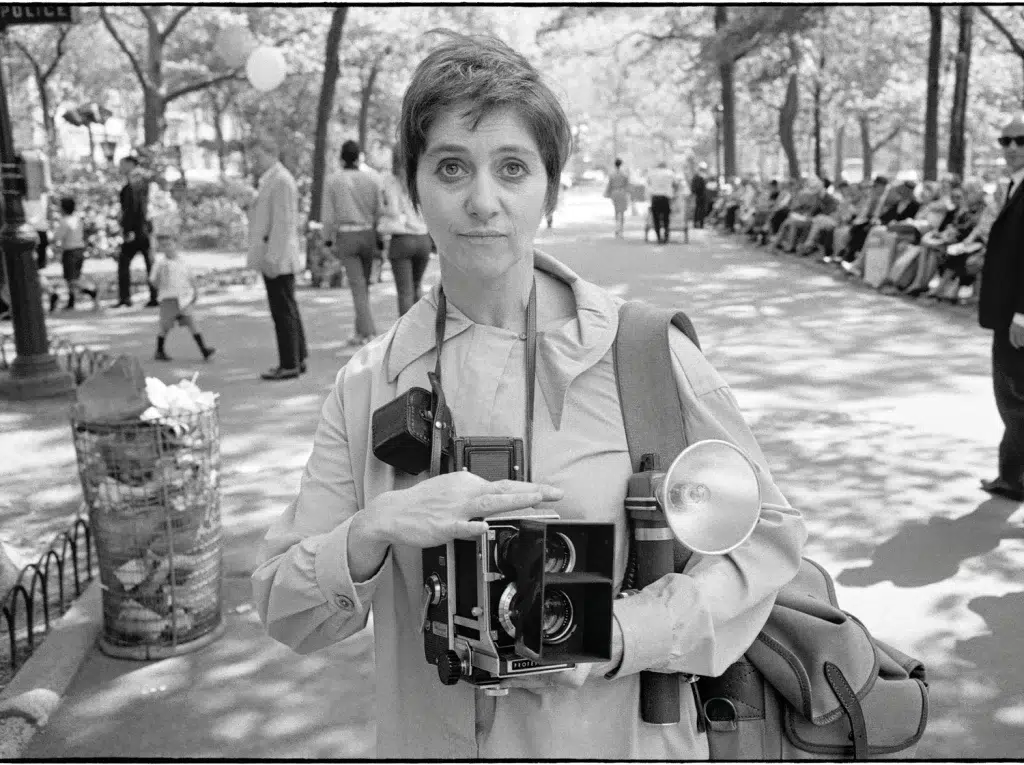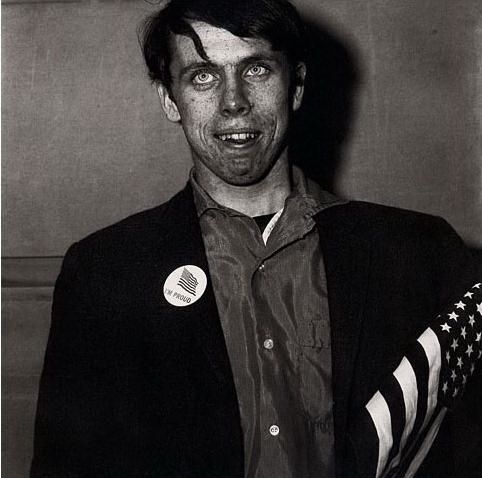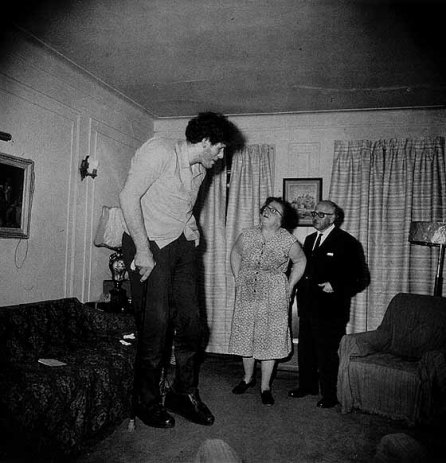Diane Arbus: A Renowned Photographer | Biography and Legacy
Diane Arbus was born on March 14, 1923, in New York City. She was raised in a wealthy Jewish family. Her father, David Nemerov, was a successful businessman who owned a department store. Her mother, Gertrude, was from a family of artists. Arbus grew up in a privileged environment, but she often felt disconnected from her upbringing.

Her early years were marked by a sense of isolation. Diane attended the Ethical Culture Fieldston School, where she excelled academically. However, she always struggled with fitting in, feeling out of place in her affluent surroundings. Later, she briefly attended the University of New Mexico, where she began exploring her interest in photography.
Introduction to Photography
Diane Arbus’s first exposure to photography came through her marriage to Allan Arbus, a photographer. They married in 1941 when Diane was 18. Together, they opened a photography studio in New York. Diane worked as a fashion photographer, creating images for department stores and magazines.
Despite her commercial success, Arbus found little satisfaction in fashion photography. She felt that it lacked the emotional depth and authenticity she craved. During the 1950s, she began studying photography in more depth, first with teacher Alexey Brodovitch and later with renowned photographers like Lisette Model.
In the mid-1950s, Diane and Allan’s marriage ended, and Diane began focusing more on personal projects. She shifted from fashion photography to more intimate, personal works that would define her career.
Developing a Unique Style
Arbus is best known for her portraits, which captured people in a raw and unflinching way. Her photographs often focused on individuals who were considered outsiders or who lived on the fringes of society. These included circus performers, transgender individuals, people with disabilities, and those with mental illnesses.
Her subjects were often seen in unusual or vulnerable positions, emphasizing their humanity and individuality. Arbus’s work was unconventional in its portrayal of the human condition. Rather than focusing on beauty or perfection, she sought to show people in their truest form, often displaying vulnerability, strength, or awkwardness.
One of Arbus’s signature techniques was her use of a large-format camera, which gave her the ability to capture immense detail. She used it to approach her subjects directly, allowing for a sense of closeness and intimacy in her work. The large format also helped her achieve the sharp clarity that became a hallmark of her style.
Major Works and Achievements
Diane Arbus’s portfolio includes some of the most iconic photographs of the 20th century. One of her most famous images is “Identical Twins, Roselle, New Jersey, 1967,” which shows two identical twin girls in matching outfits. Their serious expressions and symmetrical features make the image both haunting and captivating.

Another notable work is “Child with Toy Hand Grenade in Central Park, New York City, 1962.” The photograph shows a young boy holding a toy grenade, with a look of aggression on his face. The image is often seen as a reflection of the tension and uncertainty of the time.
Arbus’s photo essay on the mentally ill people and her work with circus performers are also widely celebrated. Her work garnered widespread attention, and in 1967, she was the first photographer to have a solo exhibition at the Museum of Modern Art (MoMA) in New York. Despite being celebrated in the art world, her work often provoked controversy due to its raw and unsettling nature.

Style and Technique
Diane Arbus’s approach to photography was deeply personal. She often formed close relationships with her subjects, spending time with them before capturing their images. She engaged with her subjects in a way that allowed her to capture their essence.
Arbus preferred to use a large-format camera, which allowed her to achieve incredible detail. Her portraits are typically shot with a shallow depth of field, focusing sharply on her subject while blurring out the background. This technique emphasized her subjects and created a sense of intimacy.
She shot primarily in black and white, which enhanced the emotional intensity of her work. Arbus was able to capture the delicacy of light and shadow, often using natural light to create mood and depth.
Personal Life and Struggles
Diane Arbus’s personal life was often tumultuous. She married Allan Arbus in 1941, and they had two daughters, Doon and Amy. However, their marriage began to deteriorate, and they divorced in 1959. Throughout her career, people well-documented Arbus’s personal struggles, including her depression.
In addition to her emotional battles, Arbus faced challenges as a woman in a male-dominated art world. She fought for recognition and faced criticism for her unconventional approach to photography. Despite these challenges, Arbus remained dedicated to her craft and continued to create powerful work.
Her mental health issues deepened in the 1960s, and she struggled with feelings of isolation and despair. This period of intense emotional distress ultimately led to her tragic death. Diane Arbus died by suicide on July 26, 1971, at the age of 48. Her death was a tragic end to a remarkable career.
Legacy and Influence
Diane Arbus’s legacy has only grown since her death. Her work has influenced generations of photographers, artists, and filmmakers. People credit her with changing the way portrait photography is viewed. It emphasizes the raw and determined portrayal of the human experience.
Galleries and museums around the world continue to celebrate Arbus’s images. Her photos are part of major art collections, including the Museum of Modern Art (MoMA) and the San Francisco Museum of Modern Art (SFMOMA). They are timeless and offers a window into the human condition that still resonates with audiences today.
Her work also sparked debates about ethics in photography, as many questioned whether it was appropriate to photograph such intimate, vulnerable moments. Despite these debates, Arbus’s ability to capture the complexities of life in her subjects is unparalleled.
Conclusion
Diane Arbus’s photographs continue to evoke strong emotions and challenge conventional ideas of beauty and normality. She captured the humanity in those often marginalized or overlooked by society through her lens. Arbus’s legacy as a pioneering photographer remains an integral part of the history of portrait photography. Her work continues to inspire those who seek to explore the depths of human experience through art.


















